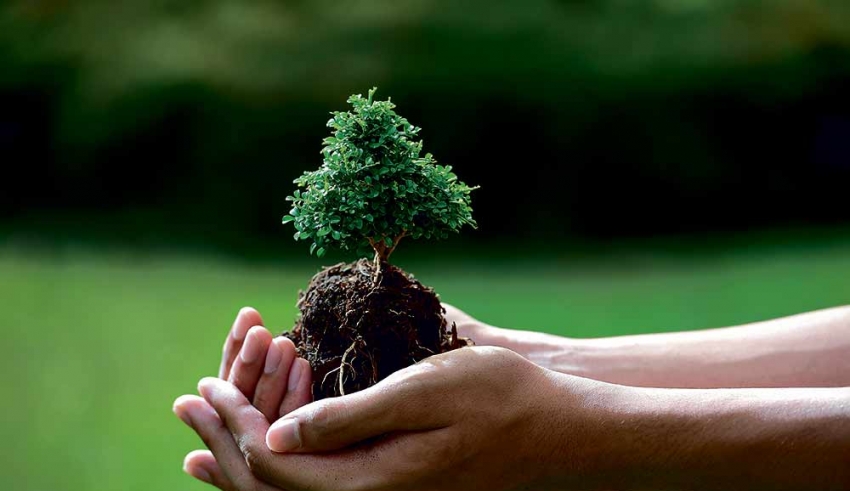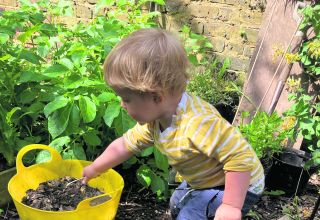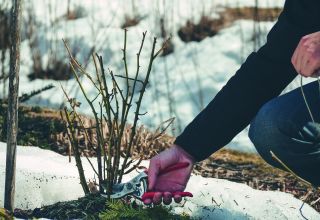
Nigel Wright, a board member of the European Bonsai Association with over 25 years of experience is passionate about bonsai trees and urges more gardeners to take up what can become a fascinating and rewarding hobby.
During my recent visit to the RHS Chelsea Flower Show this year, I was struck by the high level of interest in bonsai trees.
The knowledgeable members of Federation of British Bonsai Societies did much to explain away some of the misconceptions about bonsai.
Bonsai trees are not special; they are largely native trees you would find outside in a garden.
It therefore follows that bonsai trees like to live outdoors, although those from warmer parts of the world need winter protection.
Bonsai trees do not come from special seeds; and yes, root cutting is done to prevent the tree becoming ‘pot-bound’ and ultimately dying. Bonsai trees are probably the best looked after part of general horticulture and are not starved to make them small! All in all keeping a few bonsai trees takes surprisingly little time – ideal for busy people.
Bonsai started in China over 4,000 years ago. It was during the Heian period (794 – 1191 A.D.) that Buddhist monks brought bonsai to Japan. In the west bonsai only really started from the 1950s onwards.

Bonsai can be made from virtually all native coniferous and deciduous trees 
Caring for bonsai trees can become a real passion
The term bonsai is actually an ‘umbrella’ term for many aspects of the art form. There are several styles of bonsai tree for example, formal upright, informal upright, cascade, Shohin, Mame; and then Suiseki which is viewing stones; while Satsuki concentrates just on azaleas.
So, how do you start? There are several starting points.You often hear “I was given a bonsai, but it died!”. This puts people off, thinking the hobby is difficult and not worth taking up. The simple advice is as soon as possible after receiving the gift, to remove the tree from its packaging and pot to replant it in a larger flower pot in some free draining soil. Unless the instructions state particularly that the tree needs to be inside put your new gift outside until next spring. The reason for this seemingly drastic action is to allow the tree to recover from being transported, often from Asia, in a shipping container and maybe placed in a warm store for some time. If the gift has come from a reputable bonsai dealer, full instructions will be given and the above re-potting will not be necessary.
Bonsai can be made from virtually all native coniferous and deciduous trees and some garden shrubs for example, cotoneaster, sycamore or juniper. Seedlings of these are readily available in gardens, potted up and ready to be trained as bonsai. Alternatively, you could find an older tree (with owner permission) and lift it with as much root as possible. This would be cut down to three feet and you have a ready-made trunk and branches for training into your bonsai.
The most basic of tools for pruning and shaping can be found in the average kitchen or garage tool kit. An old chop stick for removing tired soil from underneath, or pushing new soil between the roots. A sharp pair of kitchen scissors will tidy up most of the smaller work such as leaves and thin branches. There is a bewildering array of bonsai tools and materials at an equally huge range of prices. Just use what you have before you decide that bonsai is a hobby you would like to take further.
A very important aspect of a bonsai is the pot into which the tree is planted. For the beginner an ordinary flower pot works well enough but devoting time and effort to your tree, to gain that appealing traditional appearance, a bonsai pot is well worth a modest investment. Plastic or mica training pots are only a few pounds and provide the tree and yourself the starting image. Fired pots, both glazed and unglazed can cost a great deal if the tree is to be exhibited, but for the hobbyist a proper bonsai pot is still relatively cheap. These can be purchased often from a local garden centre from bonsai shows, through your local bonsai club and increasingly through the internet. Winter frosts can damage pots so keep a wary eye on the weather forecast for the tree and pot to be temporary covered or put inside a frost free environment; never to be brought into a warm house as the shock may well be very detrimental to the tree.
Bonsai means it is a tree or shrub that rarely exceeds three feet grown in a container. The word ‘bonsai’ is formed from two words, ‘bon’ meaning tray or dish and ‘sai’ meaning tree or plant. The ‘art’ is to refine the bonsai so it represents a miniaturised old tree in perfect harmony and balance.
The best advice is to learn, learn, and then learn some more. Probably the best is to locate your nearest bonsai society. If you have a computer go into Google and type – bonsai society and your town/county – and a listing will come up of the friendliest bunch of people around. Your local library will also have a list of local clubs and societies. Alternatively, ask in a nearby garden centre who often know of your nearest bonsai society.
I’ve written this to help you into the bonsai hobby in an inexpensive way. It has deliberately missed out much of the technical jargon and techniques so that your approach will dispel some apprehensions and doubts about growing bonsai. What is important when starting off is to remember not to really worry about the particular species of tree that you are growing. Bonsai is an art form made of growing wood, rather than cut wood.
It is through the learning process of this art you will reap much enjoyment. Sure, there will be mistakes and failures. That is why cheap material (free) is best at the start. Learn from these mistakes and become better and wiser as you progress through the process.
While it does seem to be a difficult hobby at the start, it is really a matter of committing a little of your time to learn the basics. When you have managed to get into the groove, everything else becomes much easier and increasingly more enjoyable.
Learning the essential steps and not rushing is what will make your bonsai hobby worth a moment of time and every penny you spend on your trees.
Good luck and more importantly, have fun.
Nigel Wright www.giftrees.co.uk
For more information:
Practical bonsai workshops for beginners are available throughout the year, often with a lunch, and a tree provided to work on and take home; Mendip Bonsai, Shepton Mallet, Somerset www.mendipbonsai.co.uk is a case in point, run by John Trott.
For the bigger picture of the bonsai world there is the Federation of Bonsai Societies (FoBBS) at www.fobbsbonsai.co.uk Even further, there is the European Bonsai Association (EBA) at
www.ebabonsai.com










